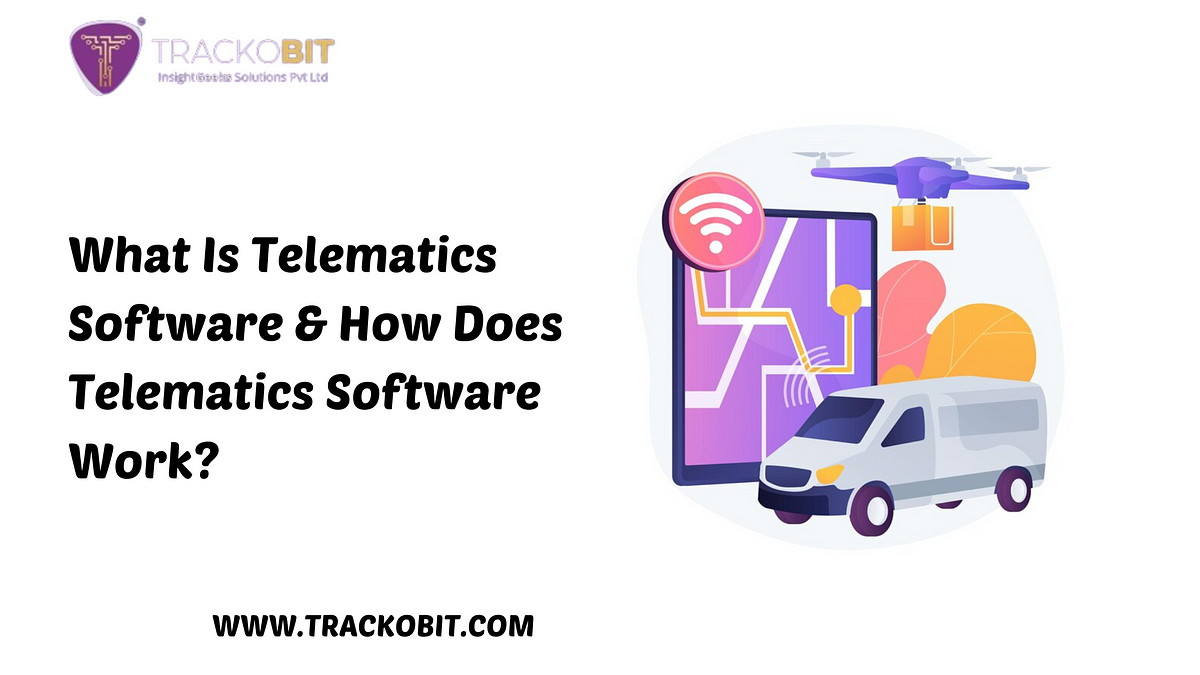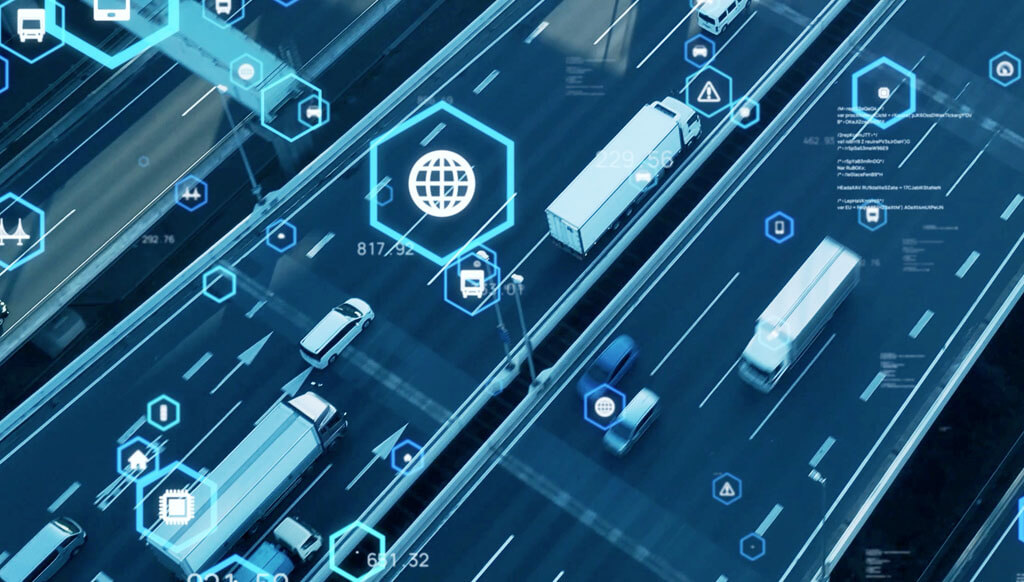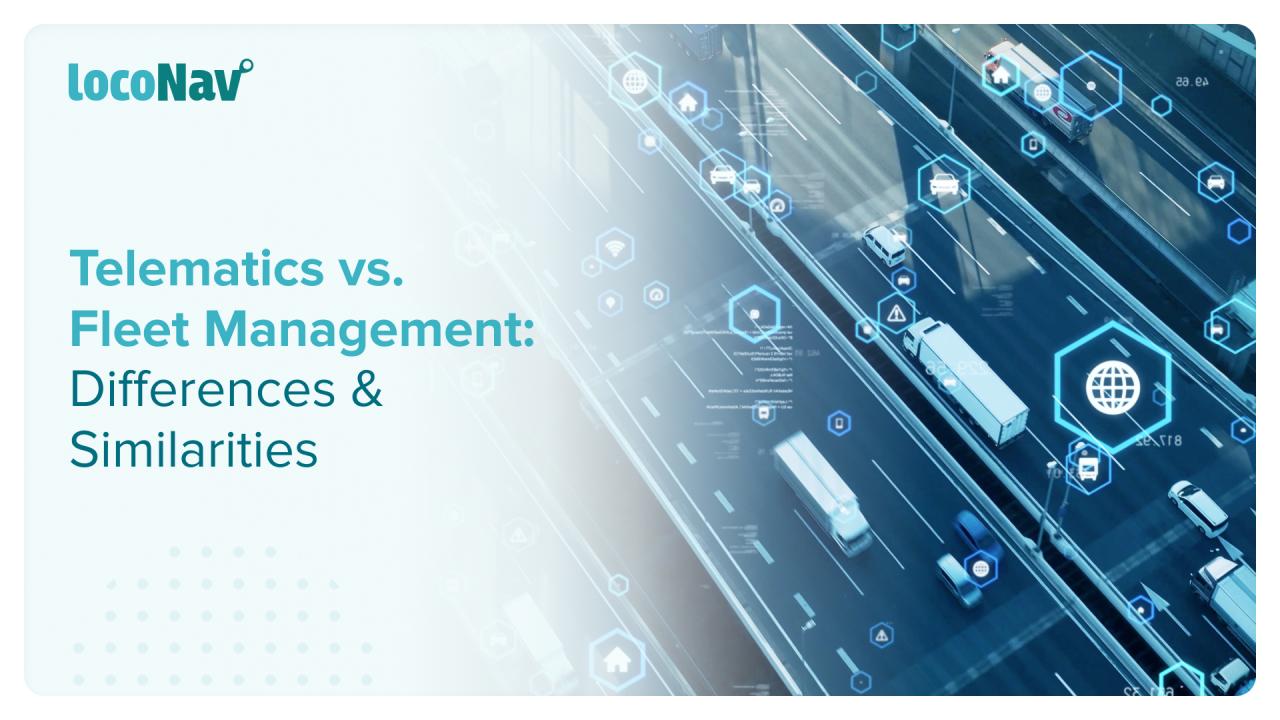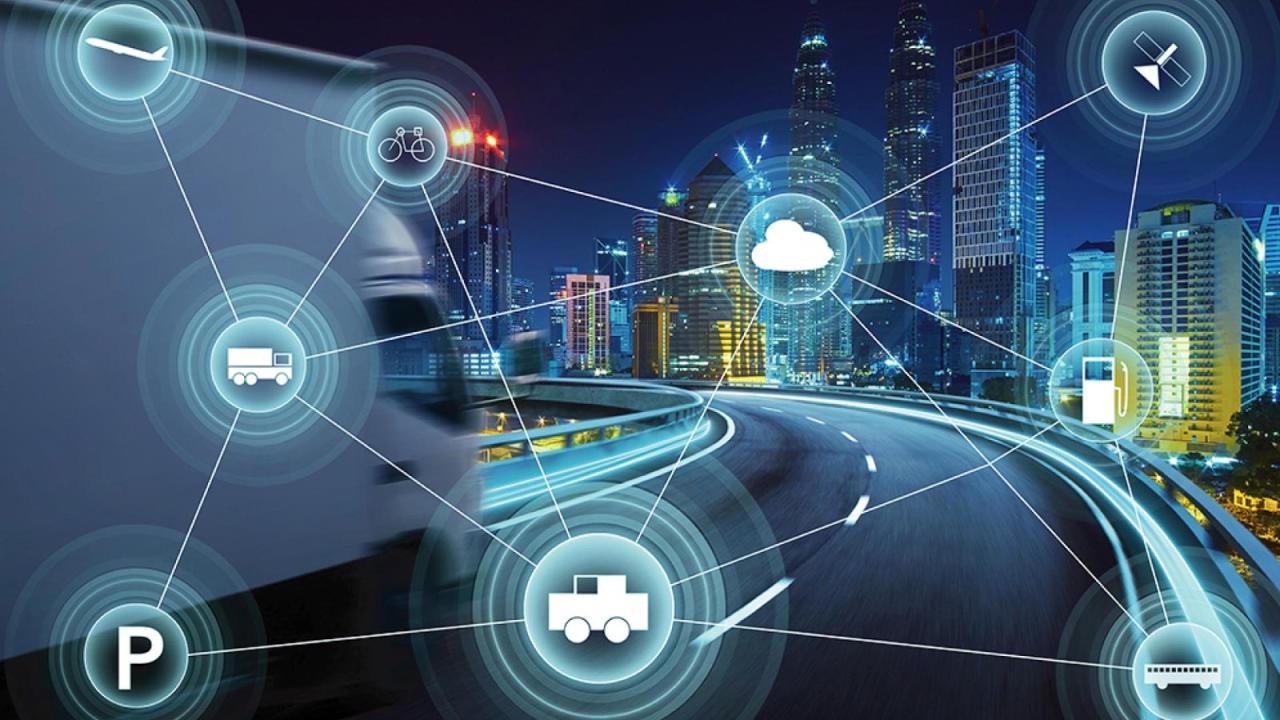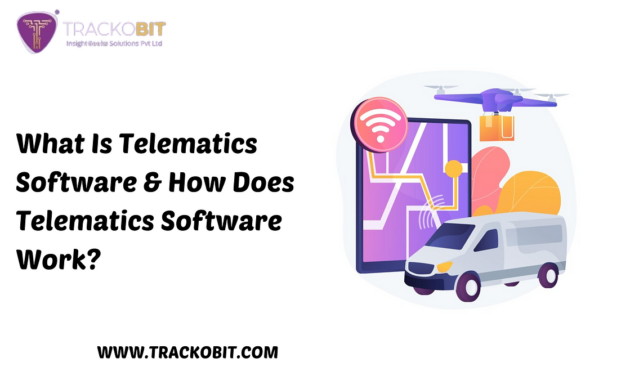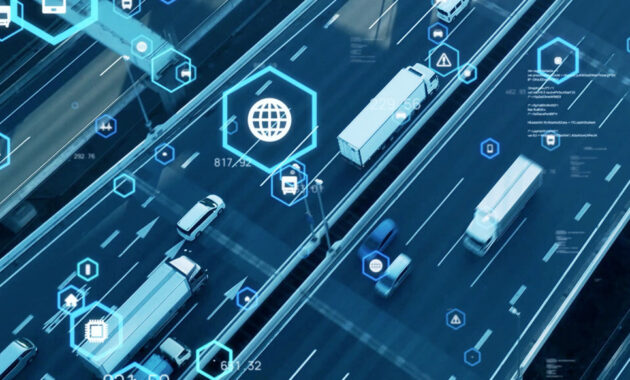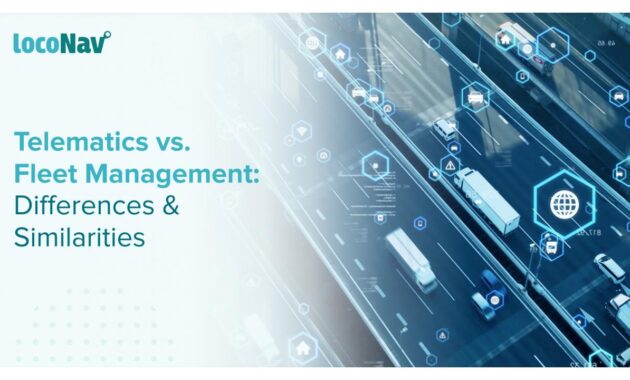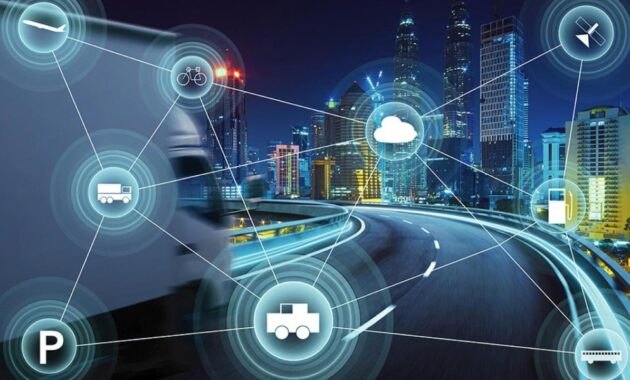Dash cam telematics opens the door to a transformative era in transportation, merging cutting-edge technology with everyday driving experiences. It combines the functionality of dash cameras with telematics systems to provide invaluable insights into vehicle performance, driver behaviors, and fleet management efficiency. With the rise of this technology, both fleet operators and individual drivers can reap significant benefits by enhancing safety, optimizing operational efficiency, and reducing costs.
This powerful system is not just about recording video footage; it encompasses a range of components and technologies that work together to collect, analyze, and transmit data in real-time. From advanced cameras to integration with GPS systems, dash cam telematics is shaping the future of the transportation industry.
Overview of Dash Cam Telematics
Dash cam telematics represents a fusion of video recording technology and vehicle tracking systems, providing invaluable insights into driving behaviors and conditions. As modern transportation increasingly relies on data to enhance safety and efficiency, dash cam telematics has emerged as a critical tool for both individual drivers and fleet operators.The core of dash cam telematics systems comprises several key components that work in unison.
At the forefront is the dash cam itself, capable of recording video footage of the road ahead, along with audio and sometimes interior cabin monitoring. Coupled with GPS technology, these systems can track a vehicle’s location in real time. Additionally, telematics software aggregates data from the dash cam and GPS to provide analytics on driving habits, route optimization, and incident reports.
Benefits of Dash Cam Telematics for Fleet Management and Individual Drivers
The advantages of incorporating dash cam telematics into daily driving operations extend far beyond mere video capture. For fleet management, these systems enhance safety, reduce liability, and optimize operations. Understanding the specific benefits can significantly influence the decision-making process for fleet managers and individual drivers alike.
Incident Documentation
Dash cam footage serves as crucial evidence in the event of accidents or disputes, helping to shift liability and expedite insurance claims. This advantage is particularly beneficial for fleets, as it reduces potential legal costs.
Driver Behavior Monitoring
Telematics systems can analyze driving patterns, allowing management to identify risky behaviors such as harsh braking or rapid acceleration. This analysis not only promotes safer driving but can also lead to cost savings on fuel and maintenance.
Route Optimization
With real-time tracking and historical data analysis, fleet managers can optimize routes, reducing travel time and fuel consumption. This capability leads to enhanced operational efficiency and lower operational costs.
Maintenance Alerts
Many telematics systems include features that alert drivers and fleet managers when maintenance is due based on driving patterns and vehicle diagnostics, preventing breakdowns and costly repairs.
Insurance Discounts
Insurance companies increasingly offer discounts to drivers and fleets using dash cam telematics, viewing it as a risk mitigation tool. This not only provides financial savings but also encourages safer driving practices.Dash cam telematics represents a powerful integration of safety and efficiency for modern transportation. By leveraging the insights provided by these systems, both individual drivers and fleet operators can enhance their driving experience, improve safety, and reduce operational costs in a rapidly evolving technological landscape.
Technology Behind Dash Cam Telematics

Dash cam telematics is a cutting-edge blend of video monitoring and data analytics designed to enhance vehicle safety and operational efficiency. This technology harnesses a variety of advanced components to provide real-time insights into driving behavior, vehicle performance, and road conditions. Understanding the underlying technologies and their functionalities is essential for fully appreciating the power of dash cam telematics.The technology behind dash cam telematics integrates multiple systems that work together to capture and analyze a wealth of information.
At the core are high-definition cameras equipped with wide-angle lenses that can record both the road ahead and the interior of the vehicle. These cameras typically feature night vision capabilities, ensuring clear footage under various lighting conditions. In conjunction with GPS modules, accelerometers, and gyroscopes, dash cams capture a comprehensive data set that includes speed, location, direction of travel, and sudden movements like hard braking or sharp turns.
Data Collection Process and Types of Data Captured
The data collection process involves continuous recording and monitoring while the vehicle is in operation. Dash cams are programmed to automatically start recording when the engine is turned on and often have built-in features that save footage during critical incidents, such as collisions or abrupt stops. The types of data captured include:
- Video Footage: High-resolution recordings of the road and inside the vehicle, providing visual evidence of driving conditions and incidents.
- GPS Data: Real-time location tracking that pinpoints the vehicle’s position on a map, helping to analyze routes and speeds.
- Driving Behavior Metrics: Data on acceleration, braking patterns, and cornering behavior which can be analyzed to improve driver safety.
- Environmental Conditions: Information on weather conditions, time of day, and lighting that can affect driving performance.
- Vehicle Diagnostics: Diagnostic codes and alerts from the vehicle’s onboard computer, providing insights into mechanical issues or maintenance needs.
This extensive range of data allows fleet managers and drivers to make informed decisions based on real-time insights, enhancing safety and efficiency.
Advancements in Camera Technology
Recent advancements in camera technology have dramatically enhanced the capabilities of dash cam telematics. Modern dash cams are now equipped with features that improve both their performance and the quality of the data they collect. Key advancements include:
- Higher Resolution Cameras: Many dash cams now feature 4K resolution, providing exceptionally clear video that captures minute details crucial for accident analysis.
- Wide Dynamic Range (WDR): This technology enables cameras to balance exposure between very bright and very dark areas, ensuring clear images in challenging lighting scenarios.
- AI-Powered Recognition: Advanced algorithms can analyze video data for real-time incident detection, recognizing events such as lane departures, collisions, and even driver fatigue.
- Cloud Connectivity: Many dash cams now offer connectivity to cloud services, allowing for remote access to footage and data analysis, which can be critical in fleet management.
- 360-Degree Cameras: These provide an all-around view of the vehicle’s surroundings, significantly increasing safety by eliminating blind spots.
These advancements not only enhance the reliability of collected data but also lead to improved vehicle safety protocols and efficient fleet management practices.
Use Cases of Dash Cam Telematics
Dash cam telematics has transformed various industries by enhancing fleet management, safety, and operational efficiency. With real-time data collection and analysis, companies are harnessing this technology to improve decision-making and reduce risks associated with road transport. Below, we explore several industries that benefit significantly from dash cam telematics.
Industries Benefiting from Dash Cam Telematics
Numerous sectors are leveraging dash cam telematics to increase safety and efficiency. These industries include:
- Transportation and Logistics: Companies in this sector use dash cams to monitor driver behavior, optimize routes, and ensure compliance with regulations. For instance, a logistics firm reported a 30% reduction in accident rates after implementing dash cam systems.
- Public Transportation: Buses and other public transport vehicles are equipped with dash cams to enhance passenger safety. Video evidence can be crucial in resolving disputes and improving driver performance.
- Insurance: Insurance companies utilize dash cam footage to assess claims more accurately. This technology has been credited with reducing fraudulent claims by providing undeniable evidence of events.
- Construction: Heavy machinery operators on construction sites benefit from dash cam telematics for safety monitoring and accident avoidance, leading to fewer worksite injuries.
Improvements in Safety and Accident Reduction, Dash cam telematics
Dash cam telematics significantly enhances road safety and helps in accident reduction through various mechanisms. By providing real-time feedback to drivers and fleet managers, it fosters a culture of accountability and awareness on the road.
The integration of dash cam telematics has been shown to reduce accident rates by up to 50% in some fleets.
Key safety improvements include:
- Real-Time Monitoring: Fleet managers can track driver behavior instantly, allowing for immediate corrective actions if unsafe driving patterns are detected.
- Driver Training: Video footage can be used as a training tool to educate drivers on best practices and improve their skills, leading to better decision-making while driving.
- Incident Analysis: In the event of an accident, dash cam footage provides critical insights into the circumstances leading up to the incident, allowing for better understanding and prevention of similar occurrences.
Successful Implementation Case Studies
Several organizations have successfully implemented dash cam telematics, leading to measurable improvements in safety and operational efficiency. These case studies highlight the real-world impact of this technology.
- Case Study: XYZ Logistics
-After integrating dash cam telematics, XYZ Logistics saw a 40% decrease in accidents within the first year. The company cited enhanced visibility into driver behavior and prompt feedback mechanisms as key factors in this reduction. - Case Study: City Bus Authority
-The City Bus Authority deployed dash cams across its fleet, which resulted in a significant drop in passenger-related incidents. The data collected allowed for targeted driver training sessions, improving overall service safety. - Case Study: ABC Construction
-ABC Construction adopted dash cam telematics to monitor equipment usage and operator behavior. This initiative led to a 25% reduction in workplace accidents, emphasizing the importance of safety compliance in high-risk environments.
Integration with Other Systems

Dash cam telematics plays a pivotal role in modern fleet management by seamlessly integrating with various systems, notably GPS and fleet management software. This integration not only enhances operational efficiency but also improves safety and accountability. By combining the power of dash cams, GPS data, and telematics, businesses can gain comprehensive insights and make informed decisions.Real-time data flow is crucial for effective fleet operations.
Dash cams equipped with telematics systems continuously send data to cloud-based platforms where it can be analyzed and acted upon instantly. This seamless interaction ensures that fleet managers have access to critical information at their fingertips, allowing them to respond quickly to any incidents or issues that arise on the road.
Data Flow Between Dash Cams and Telematics Platforms
Understanding the data flow is essential for grasping how dash cam telematics operates. The interaction between dash cams and telematics platforms involves multiple steps that facilitate the transmission of valuable information. The following Artikels the key components of this data flow:
1. Data Capture
Dash cams record video footage and capture driving behavior data, including speed, braking patterns, and acceleration. This data is collected in real-time as vehicles operate.
2. Data Transmission
The captured data is transmitted to the telematics platform via cellular networks or Wi-Fi. This ensures that data is sent continuously and can be accessed remotely.
3. Data Processing
On the telematics platform, the transmitted data undergoes processing and analysis. This allows for the identification of patterns and potential safety issues.
4. Data Visualization
Processed data is presented through user-friendly dashboards, where fleet managers can visualize metrics such as driver performance, incident reports, and vehicle location.
5. Actionable Insights
Based on the analyzed data, fleet managers can take proactive steps to enhance safety and improve operational efficiency. This might include driver training or maintenance scheduling.
“Real-time data transmission enables immediate responses, significantly reducing the risk of incidents and improving overall fleet safety.”
The integration of dash cam telematics with GPS and fleet management software results in a robust system that enhances visibility and control over fleet operations. This interconnected approach not only promotes safety but also drives efficiency, making it a vital component in the transportation industry.
Legal and Privacy Considerations
The use of dash cam telematics raises important legal and privacy issues that vary across different regions. As these devices become commonplace in various industries, understanding the legal framework surrounding their use is crucial for compliance and ethical operation. This section explores the legal implications, privacy concerns, and best practices to ensure responsible data management.
Legal Implications of Dash Cam Telematics
Different regions have established laws governing the use of dash cam telematics, particularly concerning surveillance and data protection. In the United States, laws can vary significantly from one state to another. For instance, some states require consent from all parties for audio recording, while others permit recording without consent as long as the recording occurs in a public space. In contrast, the European Union’s General Data Protection Regulation (GDPR) imposes strict regulations on personal data collection and processing, including data captured by dash cams.Key legal considerations include:
- Consent Requirements: Depending on jurisdiction, obtaining consent from individuals being recorded may be necessary. Failing to do so can lead to legal repercussions.
- Data Ownership: Organizations must clarify who owns the recorded data and how it can be used, shared, or sold.
- Storage Regulations: Specific laws dictate how long data can be retained. For example, the GDPR requires that personal data should not be kept longer than necessary for its intended purpose.
Privacy Concerns Regarding Data Collection
The data collected by dash cam telematics includes sensitive information, raising concerns about privacy. Individuals recorded by dash cams may not always be aware of being recorded, leading to feelings of distrust and invasion of privacy. Moreover, the nature of the data—often including video footage of daily activities—can lead to misuse or unauthorized access if not properly secured.To mitigate privacy concerns, it is essential to consider:
- Transparency: Organizations should communicate clearly about what data is being collected, how it will be used, and who will have access to it.
- Data Anonymization: Where possible, anonymizing data can help protect individual identities and reduce privacy risks.
- Secure Data Storage: Implementing robust security measures, including encryption and restricted access, is vital to protect recorded data.
Compliance with Data Protection Regulations
Compliance with data protection laws is non-negotiable for organizations using dash cam telematics. Ensuring adherence to relevant regulations can prevent legal issues and foster trust with employees and customers. Organizations should adopt a proactive approach to compliance by taking the following steps:
- Conducting Data Protection Impact Assessments: Assess potential risks associated with data collection and implement strategies to mitigate them.
- Establishing Clear Policies: Develop and maintain comprehensive data management policies that comply with local laws and regulations.
- Training Employees: Regular training on data protection practices for employees handling dash cam footage can prevent inadvertent breaches.
“Ensuring compliance with data protection regulations is not just a legal requirement; it’s a commitment to ethical data management.”
Challenges and Limitations
Implementing dash cam telematics can bring numerous benefits, but it also comes with its fair share of challenges and limitations. Organizations must navigate various obstacles during the adoption and operation of these systems, from technical issues to legal constraints. Understanding these challenges is crucial for businesses looking to maximize the advantages of dash cam telematics while minimizing potential pitfalls.One significant challenge faced during the implementation of dash cam telematics is the integration with existing fleet management systems.
Many organizations rely on a mix of legacy systems that may not seamlessly connect with new technology. This can lead to data silos, where information from the dash cams does not combine effectively with other operational data, hindering decision-making processes. Additionally, ensuring the reliability of the hardware and software is a critical issue, as unreliable systems can lead to gaps in data collection and analysis.
Common Challenges in Implementation
Several challenges arise during the implementation of dash cam telematics. The following points highlight these common issues:
- Technical Difficulties: Issues such as software bugs, hardware malfunctions, and network connectivity can disrupt the performance of dash cam telematics systems.
- Data Overload: The vast amount of data generated by dash cams can overwhelm fleet managers, making it challenging to extract actionable insights.
- Employee Resistance: Drivers and employees may have concerns about privacy and surveillance, leading to resistance in adopting the technology.
- Cost Considerations: The initial investment and ongoing maintenance costs can be significant, impacting budget allocations for fleet operations.
- Training Needs: Staff require proper training on how to use the new systems effectively, which can be time-consuming and resource-intensive.
Limitations of Dash Cam Telematics Systems
Different dash cam telematics systems come with varying limitations that organizations must be aware of. These limitations can affect their functionality and overall effectiveness. The following aspects illustrate the limitations that may be encountered:
- Video Quality: Some dash cams may not provide high-definition video, which can affect the clarity of recordings and the utility of the footage in investigations.
- Storage Capacity: Limited storage options can restrict the amount of footage that can be stored and accessed, especially in high-traffic situations where significant recording occurs.
- Battery Life: Dash cams that rely heavily on battery power may have limited operational time, especially if they are not hardwired into the vehicle.
- Real-Time Monitoring Limitations: Not all systems offer real-time data transmission, which can delay incident response times.
- Privacy Regulations: Compliance with local laws regarding video surveillance can limit how and when footage can be utilized or shared.
Potential Solutions to Address Challenges
Organizations can adopt several strategies to overcome the challenges and limitations associated with dash cam telematics. These solutions can enhance the overall effectiveness of the technology:
- Invest in Training: Providing comprehensive training for staff can alleviate resistance and enhance the use of telematics data for decision-making.
- Choose Scalable Systems: Opting for systems that can integrate with existing technologies can facilitate smoother implementation and data sharing.
- Utilize Cloud Storage: Implementing cloud-based storage solutions can resolve capacity issues and ensure easy access to data from anywhere.
- Engage Stakeholders: Involving drivers and employees in the implementation process can help address concerns related to privacy and foster a culture of transparency.
- Regular System Updates: Keeping software and hardware up to date can mitigate technical issues and enhance the performance of dash cam telematics.
Future Trends in Dash Cam Telematics
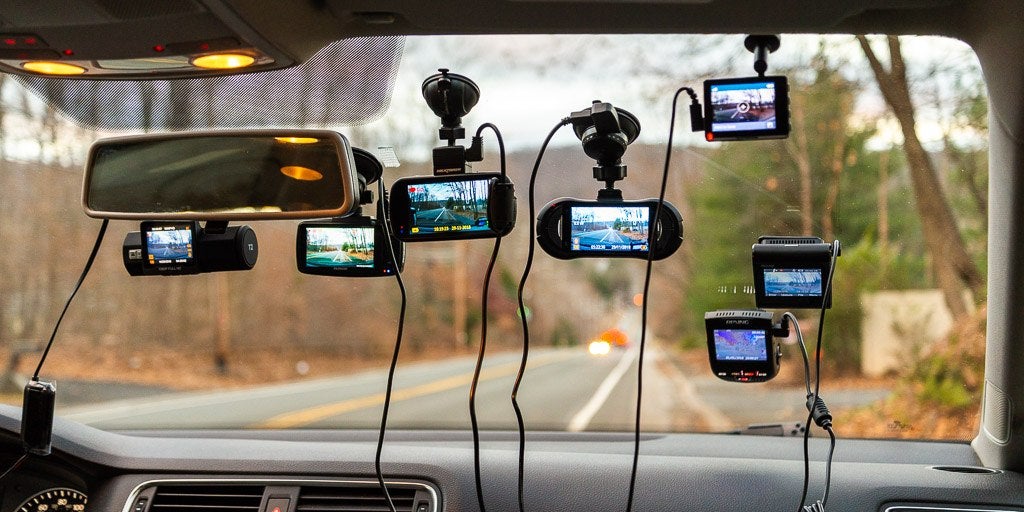
As dash cam telematics continues to evolve, several trends and innovations are expected to shape its future significantly. With the increasing integration of advanced technologies, the next decade promises enhancements that will not only improve safety but also revolutionize fleet management and individual driver experiences. This section will explore the emerging trends and technologies that will play a pivotal role in this evolution.
Emerging Technologies in Dash Cam Telematics
The integration of cutting-edge technologies is setting the stage for the next generation of dash cam telematics. These advancements include enhanced video resolution, cloud computing, and artificial intelligence, which together will provide more comprehensive data and insights.
- Higher Resolution Cameras: Future dash cams are expected to feature 4K and even 8K resolution capabilities. This will significantly improve image clarity, making it easier to identify license plates and critical details in any recorded incidents.
- Cloud-Based Storage: With the shift towards cloud services, dash cams will increasingly rely on cloud storage for video footage. This allows for real-time data access and analysis while reducing reliance on physical storage devices.
- Artificial Intelligence: AI will play a crucial role in processing data collected by dash cams. AI algorithms can analyze driving patterns, detect anomalies, and even predict potential hazards, making telematics systems smarter and more proactive.
Predictions for the Next Decade
As we look ahead, several predictions can be made regarding the evolution of dash cam telematics. These predictions are based on current technological trajectories and consumer demands.
- Integration with Smart City Infrastructure: Dash cams are likely to become integral components of smart city ecosystems, providing real-time data that can influence traffic management, accident response, and urban planning.
- Enhanced Driver Assistance: Telemetrics systems may evolve to support more advanced driver-assistance features (ADAS), such as automatic braking and lane-keeping assistance, enhancing overall safety on the roads.
- Data-Driven Insurance Models: The insurance industry is expected to adopt data-driven models based on dash cam telematics, allowing for personalized premiums based on actual driving behavior, potentially lowering costs for safer drivers.
Impact of Artificial Intelligence on Telematics Systems
Artificial intelligence stands to dramatically enhance the capabilities of dash cam telematics systems. AI’s ability to process vast amounts of data enables more accurate and timely insights.
- Real-Time Incident Detection: AI-powered systems can automatically detect accidents or unusual driving behaviors and alert fleet managers or authorities instantly, improving response times and potentially saving lives.
- Behavioral Analysis: AI can analyze driving patterns to identify risky behaviors, such as harsh braking or acceleration, providing feedback to drivers to improve safety.
- Predictive Analytics: By leveraging historical data, AI can predict future incidents or maintenance needs, allowing for proactive measures to prevent accidents or mechanical failures.
“The convergence of AI and telematics will not only enhance safety but also transform how we approach driving and fleet management.”
The future of dash cam telematics is bright, with emerging trends and technologies promising significant advancements that will reshape driving experiences and safety standards. As we embrace these innovations, the integration of AI will play a crucial role in making our roads safer and more efficient.
Top FAQs
What is the primary benefit of dash cam telematics?
The primary benefit is improved safety through real-time monitoring and data analysis, which helps in accident prevention and fleet management.
Are dash cam telematics systems compatible with all vehicles?
Most dash cam telematics systems are designed to be compatible with a wide range of vehicles, but it’s essential to check specifications for specific models.
How does dash cam telematics impact insurance premiums?
Using dash cam telematics can lead to lower insurance premiums as it demonstrates proactive measures for safety and risk management.
Can dash cam telematics be used for personal vehicles?
Yes, dash cam telematics can be beneficial for personal vehicles, providing insights into driving behavior and enhancing safety.
What types of data are typically collected by dash cams?
Dash cams typically collect data on speed, location, driving habits, and video footage of the road and surrounding environment.





